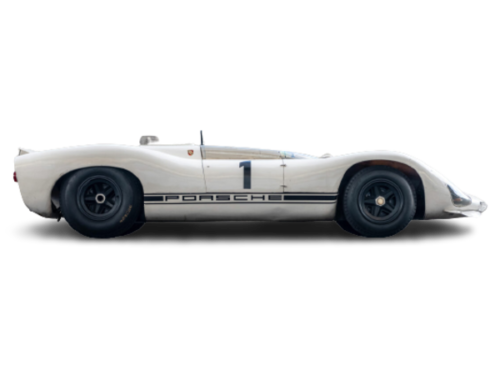Porsche 910/8 Bergspyder (1967)
Premiered on May 21, 1967 at Montseny hill climb in Catalonia
In 1967 and 1968, Porsche’s lightweight 910 Bergspyder (the 910 was essentially an updated 906) were the championship-winning race cars. With between 200 and 270 horsepower and weight around 420 kg, they were extremely nimble and well-suited to dominating mountain roads. In 1967 and 1968, the Porsche 910/8 Bergspyder was the dominant force before the 909 came along.
Technically, the Porsche 910 Bergspyder was state-of-the-art, featuring materials such as titanium (brake calipers), beryllium (brake discs), magnesium (wheels), electron (tank), plastic (body) and aluminium. The running gear was similar to that of a Formula 1 car, including an eight-cylinder boxer engine that had about 275 horsepower.
The European Hillclimb Championship regulations stipulated 2-liter engine but didn’t stipulate minimum weight. The 910/8 initially weighed just under 990 pounds (450 kg) but by 1968, with additional development and optimization it weighed in at just 930 pounds (420 kg). It wasn’t enough for Ferdinand Piëch who ordered the brand-new hillclimb car, lighter even than the bantamweight 910.
The Details
On May 13, 1967, the Porsche racing department in Stuttgart Zuffenhausen finished the 910/8 Bergspyder with chassis number 910.031 and shortly thereafter sent it to its first of many races. This car quickly became the favorite of factory driver Gerhard Mitter, who won the European Hillclimb Championship in that year. The low curb weight of less than 450 kilograms and the approximately 275-hp eight-cylinder boxer engine helped him to achieve some success. For the sprint from standstill to 62 mph it takes less than three seconds. To reduce weight, Porsche used materials like plastic, aluminium, titanium and magnesium. For example, they made a fuel tank with just 26 liters capacity of the magnesium alloy electron. They also renounced on a heavy alternator. Instead, the necessary electricity came from a silver battery.
Under the ultralight fiberglass reinforced plastic body is a steel tubular frame and a chassis on the stand of Formula 1 of that time with 13-inch magnesium wheels. At the rear sits an adjustable spoiler to generate more or less downforce depending on the circuit. This 910/8 Bergspyder proved its performance just one week after completion at the 200-Kilometer-Race in Montseny, Spain. It won it.
Versions
- 1967 910 Bergspyder (oil cooler under the front lid)
- 1967 910 Bergspyder Light (single rear spoiler, oil cooler on the left or right side)
- 1968 910 Bergspyder Light (2 individual active rear spoilers, oil cooler on the right side)
Racing Success
Gerhard Mitter had won the 1966 European Hill Climb Championship (EHCC) driving the 906-010 Targa and the 910 Targa. For the 1967 season he got a new weapon, the 910/8 Bergspyder.
The car was called as a Bergspyder and not just as a Spyder as it was specifically made for hill climb events. The hill climb cars had very small fuel tanks to save weight. Fragile 8-cylinder engines could be used because of the short distances they had to withstand.
On June 18, the Mont Ventoux hill climb in France was won by Stommelen. On July 10, at Trento Bondone in Italy, Mitter was victorious again. Just a week later, on July 16 at Cesana Sestrieres in Italy, Stommelen won again. Another Porsche 1-2 victory came on July 30 at the Freiburg-Schauinsland hill climb in Germany.
For the 7th event in the 1967 EHCC calendar at Ollon-Villars on August 27, a new 910 Bergspyder Light was introduced. It was made as light as possible, even the bodywork was removed where possible (on the sides under and the rear face), the front lid vent/front oil cooler was eliminated and left side air scoop/oil cooler was introduced. This allowed to save on the weight of the oil and oil pipes. The frame of Mitter’s car was made of titanium tubes and the car weighed just 450 kg/990 lb. Stommelen’s car was around 20 kg heavier. With their 8-cylinder engines these cars were extremely agile and fast.
At the September 3, 1967 Gaisberg hill climb in Austria, Mitter had a car with the side air scoop on the right side (Stommelen still had a car with left side scoop). At this event Stommelen was victorious, Mitter second. This was the last event of the 1967 EHCC season. All the 1967 EHCC races were won by 910 Bergspyders, either by Mitter or Stommelen. They finished the championship with the same amount of points. Both had won 4 events, both had scored second 3 times. And Mitter had one third place finish, while Stommelen did not participate in one event. Gerhard Mitter became the 1967 EHCC champion, his second year in a row.
For the 1968 season, the 910 Bergspyders got more modifications. The lightweight spyders now had their air scoops on the right side and a new rear spoiler was introduced. Instead of one wide rear spoiler now the cars had two active spoilers. At the hill climb events the rules allowed a lot of experimenting, so active rear spoilers could be used.
In addition to Mitter and Stommelen, Porsche had hired Ludovico Scarfiotti to pilot the third factory entered 1968 910 lightweight spyder. Since 1958 Porsche had taken the European Hill Climb Championship victory every year except in 1962 and 1965 when the championship was won by Ludovico Scarfiotti for Ferrari. At the first 1968 event in Montseny, Scrafiotti scored second between Mitter and Stommelen.
The next event was at Rossfeld in Germany and a day before the competition, on a training (June 8, 1968), Scarfiotti flew off the track and into the trees. He was thrown off the car and was airborn for a long time before hitting the ground. His life couldn’t be saved. Ludovico Scarfiotti, at the age of 34, became the first Porsche factory driver to die at duty. Stommelen did not participate in the next day’s competition, Mitter won.
At the 1968 EHCC Mitter won 7 hill climbs out of 8 and became the King Of The Hill, third year in a row. Stepping on his heels was Dieter Quester with BMW Monti. Rolf Stommelen had skipped two hill climbs and didn’t win any in ’68. During the two last events Stommelen used the new Porsche 909 Bergspyder that was even lighter than the 910 Lightweight Bergspyder.
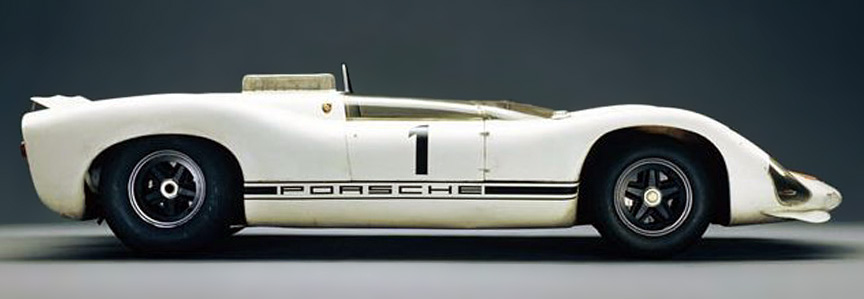
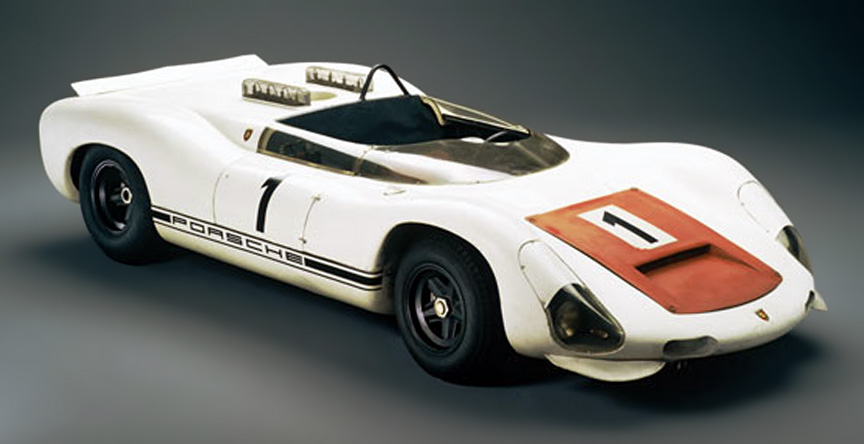

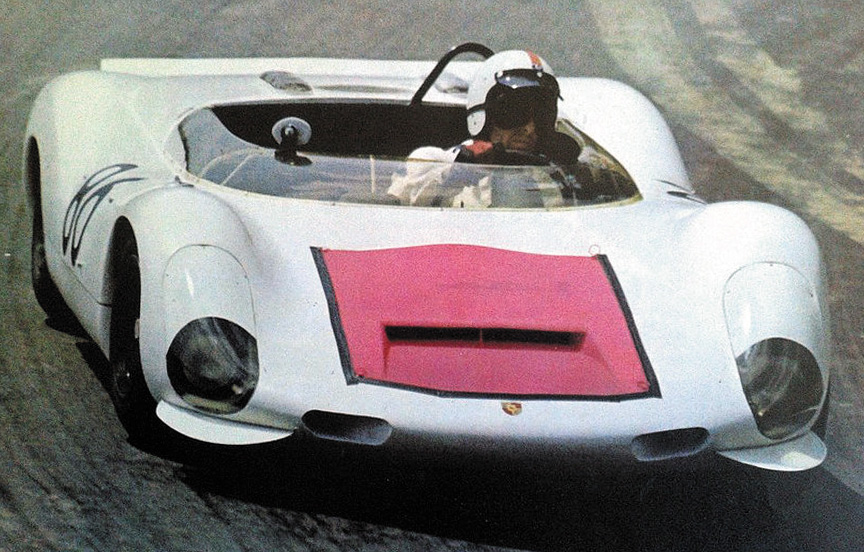

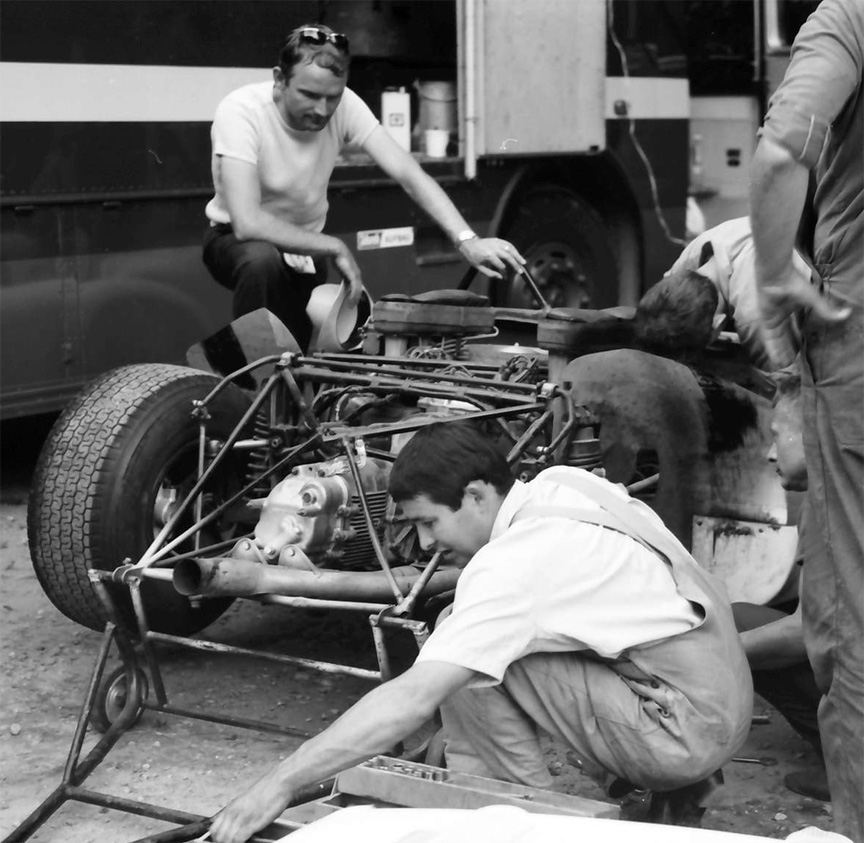

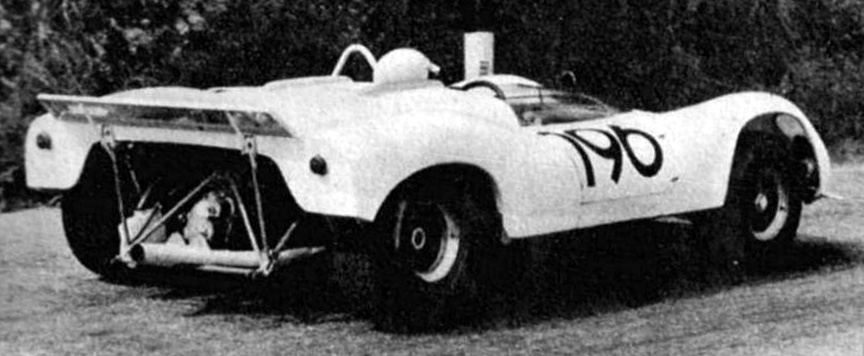


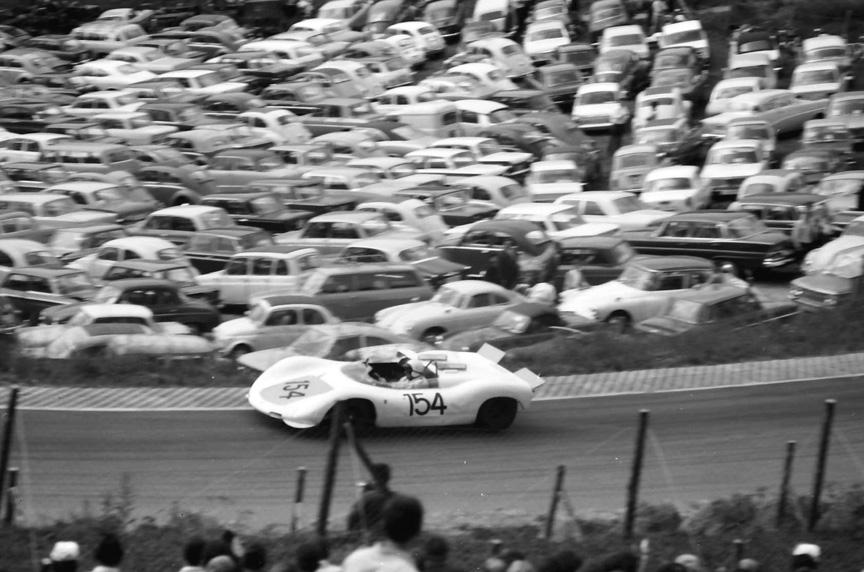
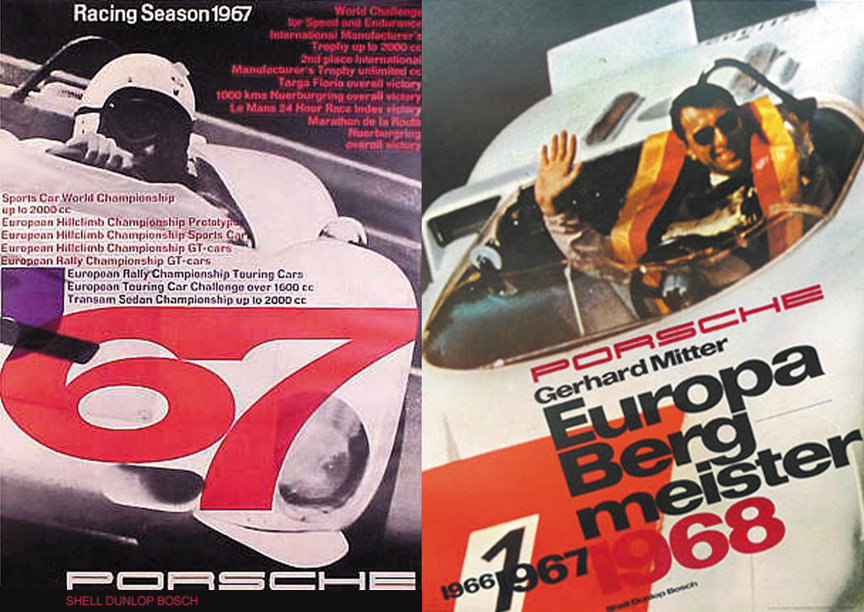
Race Results
The 910/8 Bergspyder raced in 1967 and 1968 in a total of eight events, with 11 entries. In total, there were 9 finishes and 0 retirements. The 910/8 Bergspyder won two races as well as two class wins on top of that. There were two second place finishes and one third place finish.
| Date | Race | No. | Chassis | Drivers | Entrant | Result |
| 8/27/1967 | Hill Climb Ollon-Villars | 196 | #031 | Gerhard Mitter | Porsche System Engineering | 1st |
| 8/27/1967 | Hill Climb Ollon-Villars | 196T | Gerhard Mitter | Porsche System Engineering | T-car | |
| 8/27/1967 | Hill Climb Ollon-Villars | 197 | Rolf Stommelen | Porsche System Engineering | 2nd | |
| 8/27/1967 | Hill Climb Ollon-Villars | 197T | Rolf Stommelen | Porsche System Engineering | T-car | |
| 10/1967 | DARM Hockenheim [SP] | #006 | Heini Walter | 2nd | ||
| 5/5/1968 | USRRC Laguna Seca | 33 | #031 | Scooter Patrick | Otto Zipper | 8th |
| 6/2/1968 | SCCA National Willow Springs [ASR+BSR+CSR] | 33 | #031 | Scooter Patrick | Otto Zipper | 1st |
| 7/7/1968 | SCCA National Riverside [ASR+BSR+CSR] | 33 | Scooter Patrick | Otto Zipper | DNA | |
| 8/21/1968 | SCCA National San Diego | 33 | #031 | Scooter Patrick | Otto Zipper | ?th |
| 10/13/1968 |
SCCA National Phoenix [ASR+BSR+CSR]
|
#031 | Scooter Patrick | Otto Zipper | 3rd | |
| 11/24/1968 | US Champions Riverside [ASR+BSR] | 87 | #031 | Scooter Patrick | Otto Zipper | 4th |
| SCCA National Riverside | 33 | #031 | Scooter Patrick | Otto Zipper | ?th |



